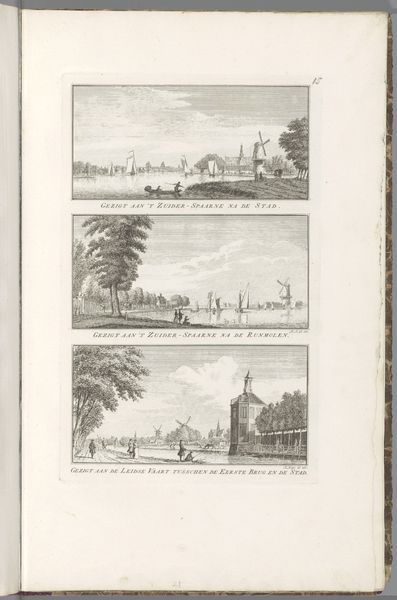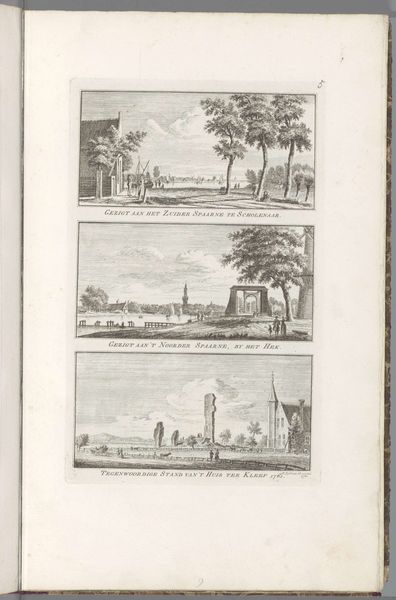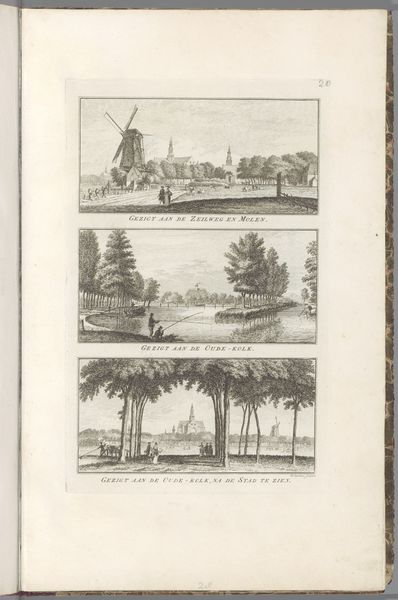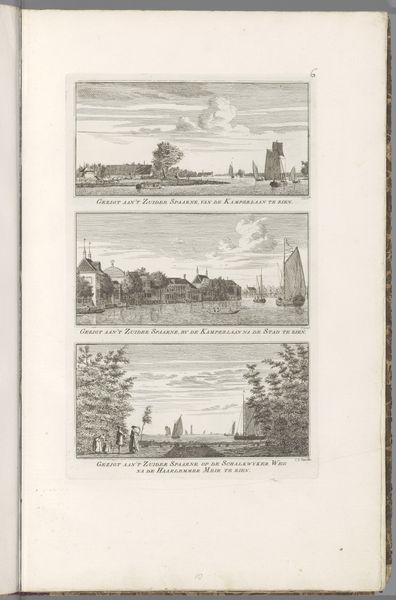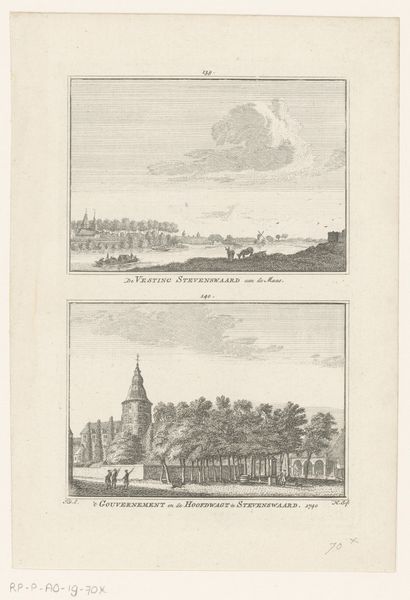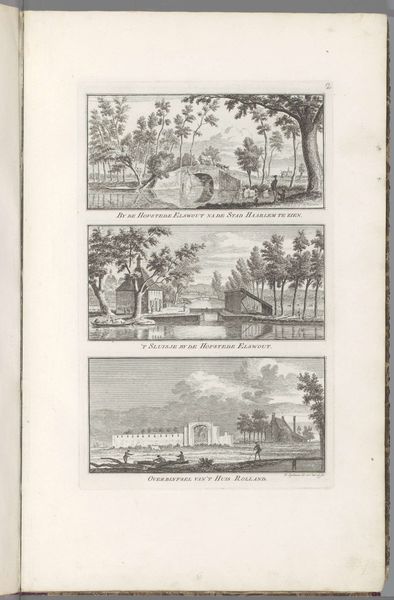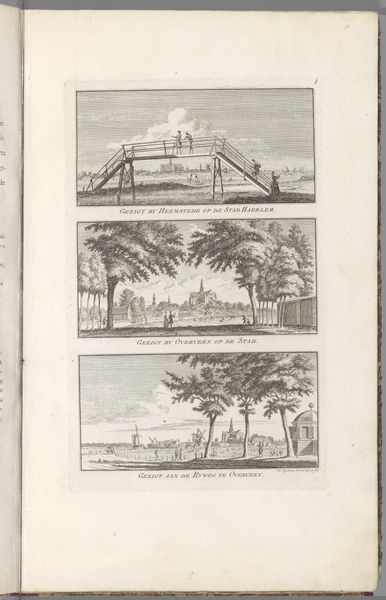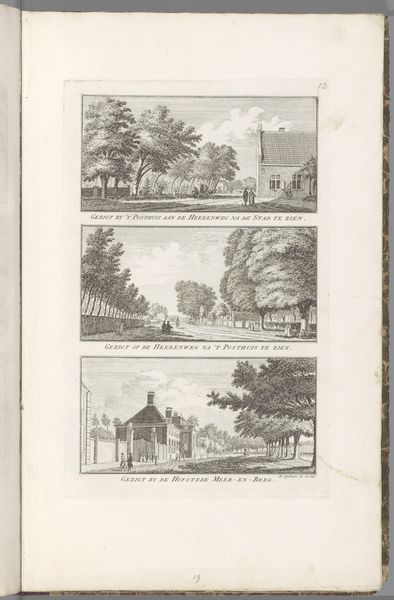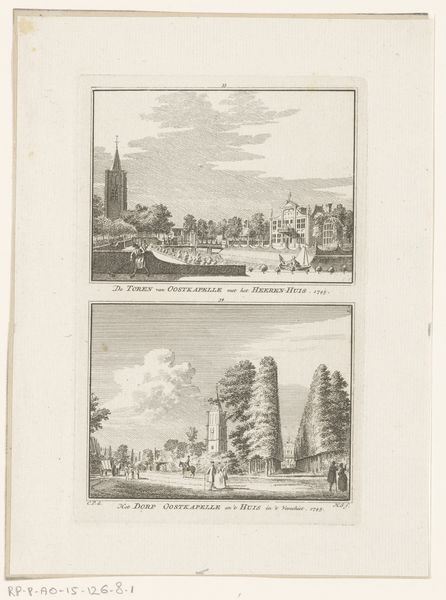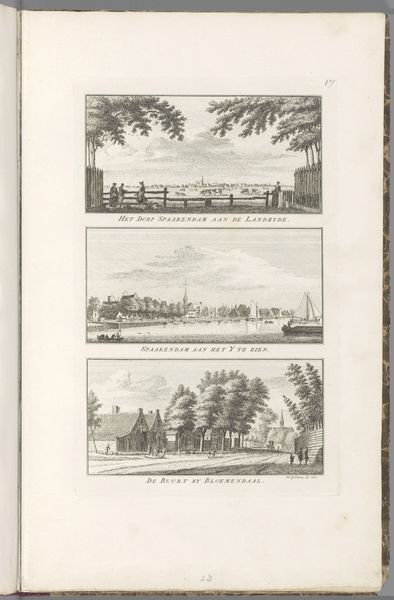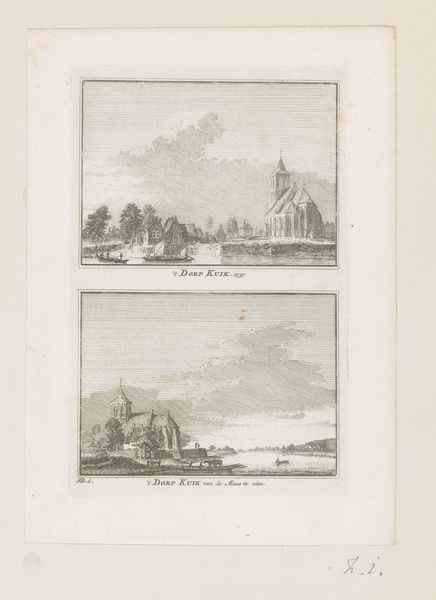
#
aged paper
#
toned paper
#
sketch book
#
personal sketchbook
#
sketchwork
#
pen-ink sketch
#
pen work
#
sketchbook drawing
#
storyboard and sketchbook work
#
sketchbook art
Dimensions: height 300 mm, width 188 mm
Copyright: Rijks Museum: Open Domain
Curator: So here we have a page from Hendrik Spilman's sketchbook, "Gezichten op de stadswallen en poorten van Haarlem," dating from 1761 to 1763. Three pen-and-ink sketches on toned paper, each capturing a different view of the city. What catches your eye? Editor: An uncanny nostalgia. The windmills especially evoke a sense of time slipping, like these images are echoes from someone's pleasant, daydreamy afternoon. What are these windmills emblems of, I wonder? Curator: Windmills often symbolize progress, industry, and ingenuity – harnessing nature's power. They are potent signifiers of Dutch identity, linked to land reclamation and prosperity, even resilience. Their enduring presence, even now, signifies a connection to this past. But Spilman's images... They’re interesting because he combines these symbols of Dutch strength with quite ordinary, unassuming scenes. Editor: It’s a comforting paradox, this marriage of monumental identity with simple daily life. It tells a story about pride, surely, and practicality, too. He depicts them alongside folks on bridges and by buildings. Do you suppose there are subliminal allegories being suggested? I'm wondering about trade, maybe, given Haarlem's history. Curator: Perhaps, but I think it is possible he was simply capturing the environment around him, observing how the daily commerce intersects with these historical landmarks. It isn’t only trade or one specific activity; these structures were vital to every facet of early Haarlem life, to everyone who moved within its borders. I don’t think Spilman needs allegory when these buildings speak so eloquently on their own. Editor: So you're drawn to their architectural, almost topographical, presence. While I lean toward interpreting the windmills as symbols interwoven with daily activities, their very existence creates a shared identity that extends through time. But even if we disagree on this point, Spilman’s sketches have transported me to this distant place. Curator: Indeed, they’re an invitation to consider the narratives woven into landscapes.
Comments
No comments
Be the first to comment and join the conversation on the ultimate creative platform.
